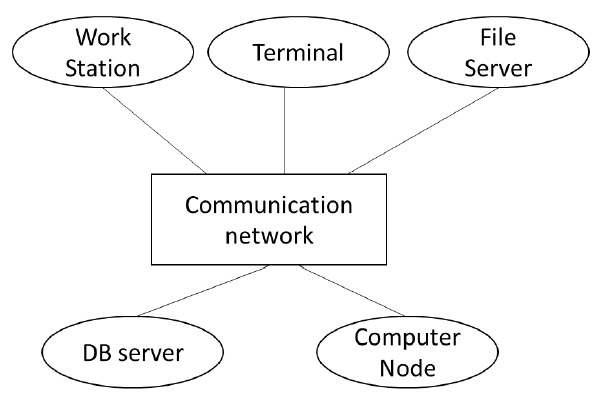
 Data Structure
Data Structure Networking
Networking RDBMS
RDBMS Operating System
Operating System Java
Java MS Excel
MS Excel iOS
iOS HTML
HTML CSS
CSS Android
Android Python
Python C Programming
C Programming C++
C++ C#
C# MongoDB
MongoDB MySQL
MySQL Javascript
Javascript PHP
PHPPhysics
Chemistry
Biology
Mathematics
English
Economics
Psychology
Social Studies
Fashion Studies
Legal Studies
- Selected Reading
- UPSC IAS Exams Notes
- Developer's Best Practices
- Questions and Answers
- Effective Resume Writing
- HR Interview Questions
- Computer Glossary
- Who is Who
What is a distributed Operating System?
Distributed Operating System is a type of model where applications are running on multiple computers linked by communications. It is an extension of the network operating system which supports higher levels of communication and integration of the machines on the network.
Distributed OS runs on multiple CPUs but for an end-user, it is just an ordinary centralized operating system. It can share all resources like CPU, disk, network interface, nodes, computers, etc. from one site to another site, and it increases the data available on the entire system.
All processors are connected by valid communication media such as high-speed buses and telephone lines, and in which every processor contains its own local memory along with other local processors.
According to this nature, a distributed operating system is known as a loosely coupled system. This operating system involves multiple computers, nodes, and sites, and these components are linked to each other with LAN/WAN lines.
Distributed OS is capable of sharing their computational capacity and I/O files while allowing virtual machine abstraction to users.
The distributed operating system is depicted below −

Applications of Distributed Operating System
The applications of distributed OS are as follows −
-
Internet Technology
-
Distributed databases System
-
Air Traffic Control System
-
Airline reservation Control systems
-
Peep-to-peer networks system
-
Telecommunication networks
-
Scientific Computing System
-
Cluster Computing
-
Grid Computing
-
Data rendering
Types
There are three types of Distributed OS.
-
Client-Server Systems − It is a tightly coupled operating system. It is used for multiprocessors and homogeneous multicomputer. Client-Server Systems works as a centralized server because it provides the approval to all requests, which are generated by the client systems side.
-
Peer-to-Peer Systems − It is a loosely coupled system. It is implemented in the computer network application because it contains a bunch of processors, and they are not shareable memories or clocks as well. Every processor consists of its own local memory, and these processors communicate with each other through various communication media such as high-speed buses or telephone lines.
-
Middleware − It allows the interoperability in the between of all applications, which are running on other operating systems. By using these services those applications are capable of transferring all data to each other. It allows distribution transparency.
Protection and security in Distributed Operating system
The Distributed OS is used to a large extent in the organization. Because of more usage the Protection and Security come into the surface where their role is to preserve the system from any cause of damage or loss from external sources and keep it protected.
There are different ways to safeguard the distributed OS by applying measures. Some of the methods are Authentication that includes username/password, user key. One Time Password (OTP) is also one of the main applications that are applied under security in distributed OS.

